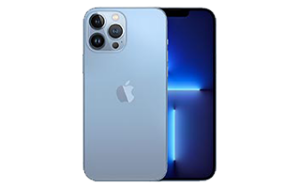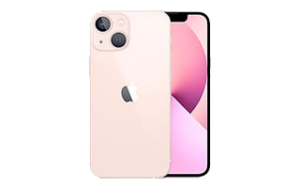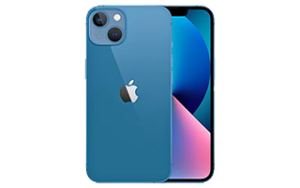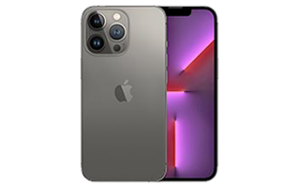In the battle between last year’s iPhone 12 handsets and the shiny new iPhone 13 models, who comes out on top?
Apple iPhone 12 vs iPhone 13: Upgrade time?
It’s that time of year again. Despite a global pandemic, Apple hasn’t missed a beat when it comes to the typical September unveiling and releasing of a new range of iPhone handsets. You don’t need to be Nostradamus to know this year’s model was going to be called the iPhone 13, but what is of more interest is how it compares to the iPhone 12.
After all, not every year brings with it the kind of essential ‘killer app’ features that necessitate a smartphone upgrade. Let’s take a closer look at how the iPhone 12 smartphones hold up against its newer iPhone 13 siblings.
- Best iPhone 13 plans: For the standard iPhone
- Best iPhone 13 mini plans: Downsize to 5.4 inches
- Best iPhone 13 Pro plans: For the premium experience
- Best iPhone 13 Pro Max plans: For the largest and longest-lasting iPhone
- Best price on iPhone 13 in Australia Whether you buy outright or on a plan
- iPhone 13 vs iPhone 13 Pro Three cameras or two?
- iPhone 13 vs iPhone XR, XS and X Does the iPhone 13 have the X factor?
So, is it worth the upgrade from iPhone 12 to iPhone 13?
Let’s cut to the chase. In our opinion, it’s not really worth upgrading from the iPhone 12 to the iPhone 13 at this stage. Assuming you’re looking at either a base model 12-to-13 upgrade or Pro-12-to-Pro-13 upgrade, we’d recommend holding your horses. If you are interested in making the jump from iPhone 12 to iPhone 13 Pro, though, there is an argument to be made.
The screen resolution doesn’t change across generations or models, but you do get better typical brightness, while the iPhone 13 Pro comes with ProMotion and an adaptive refresh rate up to 120Hz. Both the iPhone 13 and the iPhone 13 Pro also come with the latest Apple chipset, as well as larger storage capacity options and more system memory. Budding photographers will likely also appreciate the optical zoom improvements of the telephoto camera on the iPhone 13 Pro alongside the option to record in Dolby Vision up to 60 frames per second (fps).
You can absolutely make the leap if any of those improvements sound important, otherwise we reckon the iPhone 12 is worth hanging onto for at least another year. If you’re hanging onto an iPhone XR, XS or X, it may be worth considering an upgrade to the iPhone 13.
Apple iPhone 13 price: How much more does it cost?
Refreshingly, the price for the iPhone 13 and iPhone 13 Pro is comparatively cheaper than the iPhone 12 and iPhone 12 Pro. Last year, an iPhone 12 cost $1,349 at launch for the 64GB model, and that’s now the price for the 128GB iPhone 13. As you incrementally step up in price, the iPhone 13 holds its value.
It’s an even better story for the price comparison between the iPhone 13 Pro and the iPhone 12 Pro, with the newer model proving cheaper at every increment. There’s a $150 difference with the 128GB, 256GB and 512GB models, plus the iPhone 13 Pro offers an all-new 1TB internal storage option for those who crave more space. Check out the full price comparison below.
Apple iPhone 13 vs iPhone 12: 5G connectivity
The release of the iPhone 12 in 2020 marked the first time that Apple offered 5G handsets. At the time, there wasn’t much point in rushing out for a 5G upgrade unless you were after one of two things. Either you were living, working or otherwise spending a lot of time with 5G signal, or you wanted to future-proof for when 5G was available in your area.
Fast-forward 12 months and the state of 5G in Australia is looking a lot better, with Telstra blitzing past a milestone in June for 75% of the Australian population. The Optus 5G and Vodafone 5G networks also continue to expand. According to the network-monitoring wizards at Opensignal, 5G users are tapping into speeds five times faster than those on 4G.
The trick here is that Australian model iPhone 12s are restricted to using a slower 5G frequency, which means they can’t hit the max speeds offered by our 5G networks. Unfortunately, Apple has repeated this misstep again with the iPhone 13 in Australia, so don’t look to the iPhone 13 for a 5G speed advantage over the iPhone 12.
Apple iPhone 13 vs iPhone 12: Storage and RAM
This is one of the bigger selling points for the iPhone 13 vs iPhone 12 debate, with 64GB no longer seen as the starting point for storage capacity. Instead, the iPhone 13 and iPhone 13 Pro both start at 128GB minimum, with the iPhone 13 offering up to 512GB (vs 256GB for the iPhone 12) and the iPhone Pro selling an impressive 1TB model, too (the iPhone 12 Pro tapped out at 512GB).
Speaking of the Pro models, the 6GB of RAM for the iPhone 12 Pro is now the starting RAM for the iPhone 13, with all models sporting 6GB of RAM. Meanwhile, the iPhone 13 Pro stretches up to 8GB of RAM for its models. More memory is great for multitasking and the otherwise smooth operation of your smartphone.
Apple iPhone 13 vs iPhone 12: Camera differences
While the biggest camera upgrades from Apple were part of the iPhone 11 series, there have still been incremental improvements in what you can expect from the photographic results of the iPhone 13 and, even more impressive, the iPhone 13 Pro. Even amateur happy snappers should expect better-looking results from their pics whether shooting at day or night.
While professional photographers will appreciate the ProRAW improvements care of the larger camera sensors and A15 Bionic chip inside the iPhone 13 handsets, this logic has also been expanded to video. ProRES is the name of the new iPhone 13 feature, which is designed to offer even better video results for those who tap into the depth of its features. For casual videographers, Cinematic mode makes capturing and editing easier than ever.
Outside of this, the iPhone 12 and iPhone 13 offer very similar cameras. Meanwhile, the iPhone 13 Pro edges out the iPhone 12 thanks to bolstered optical zoom (3x vs 2x) and lower f-stop values for its wide and telephoto lenses, albeit the iPhone 12 Pro still has the f-stop edge when it comes to ultra-wide.
Apple iPhone 13 vs iPhone 12: Chipset power differences
Until we get a chance to go hands-on with the iPhone 13, digging into the nitty-gritty of the performance differences between it and the iPhone 12 is tricky. What we do know is the iPhone 13 smartphones all use the latest A15 Bionic chipset, whereas the iPhone 12 handsets use the A14 Bionic chipset.
According to Trusted Reviews, you can expect improved performance care of a noticeably higher transistor count: 15 billion in the A15 compared to 11.8 billion in the A14. For Apple, this translates to a 50% boost next to the competition, but that doesn’t include the iPhone 12.
Despite the higher transistor count, both the A15 and A14 still sport six cores, split into two high-performance cores for heavy lifting and four energy-efficient cores for everything else. While Apple is vaguely claiming that the iPhone 13’s graphics will be 30% faster than the competition, we do know that the iPhone 13 Pro has five GPU cores compared to the four inside the iPhone 13 and iPhone 12.
Finally, the A15 also boasts improvements to its machine-learning capabilities, which translates to performance boosts for Siri, photography enhancements, as well as improvements to how the iPhone 13 handles video.
On the topic of power, expect more battery life out of the iPhone 13 compared to the iPhone 12. We don’t know exactly how much extra capacity the iPhone 13 battery has compared to the iPhone 12, but Apple says to expect an extra 2.5 hours of juice from the iPhone 13 and 1.5 hours from the iPhone 13 Pro.
Apple iPhone 13 vs iPhone 12: Display changes
At face value, there’s not a massive difference between the iPhone 12 and iPhone 13 when it comes to the display. Both base and Pro models feature the same 1170×2532 screen resolution and peak 1200nits brightness levels. They all also sport Super Retina XDR OLED displays that support HDR10 and Dolby Vision.
The main difference comes with the iPhone 13 Pro model, whose ProMotion feature allows the display rate to automatically adapt up to a 120Hz refresh rate. This offers up to double the refresh rate of the iPhone 12, iPhone 12 Pro and iPhone 13. It also helps to bring the iPhone in line with the adaptive high refresh rates of Apple’s competitors.
Apple iPhone 13 vs iPhone 12: Body tweaks
There’s a slight weight difference between the iPhone 12 and iPhone 13 smartphones. The iPhone 12 is the lightest at 164 grams, compared to the 174-gram weight of the iPhone 13, while the iPhone 12 Pro weighs in at 189 grams vs the 204-gram heft of the iPhone 13 Pro. Despite the weight differences, the 6.1-inch screen size is consistent across iPhone 13 and iPhone 12 models.
It’s the same story for the design, too, except that the selfie camera notch is 20% smaller on the iPhone 13 than the iPhone 12. As is the trend, there are also some different colour options to choose from, too.
Apple iPhone 13 vs iPhone 12: Phone plans
If you’re in the market for a shiny new iPhone, you’ll want to look to one of the three network holders in Australia: Telstra, Optus or Vodafone. For a while there, Telstra was shunning 36-month handset repayment terms, but now that it’s offering them again, you can choose to pay off a new iPhone 13 handset over 12, 24 or 36 months from any of these three providers.
Don’t expect to save any money on the handset itself based on the repayment duration, but you can bring the monthly cost down by opting for longer terms. If it’s anything like the iPhone 12, there may be some handset price competition (or price matching) between some or all three telcos.
iPhone 13 plans
Check out the list below to find the most popular plans for the iPhone 13 128GB model.
iPhone 13 Pro plans
If you fancy an iPhone 13 Pro, the daily updating list below uses the 128GB model to showcase the most popular plans.
iPhone 12 plans
If you’re cool with opting for an iPhone 12, below is a daily updating list of the most popular iPhone 12 128GB plans in Australia.
iPhone 12 Pro plans
If you’d prefer an iPhone 12 Pro instead, check out the daily updating list below for the most popular iPhone 12 Pro 128GB plans in Australia.
Related Articles







